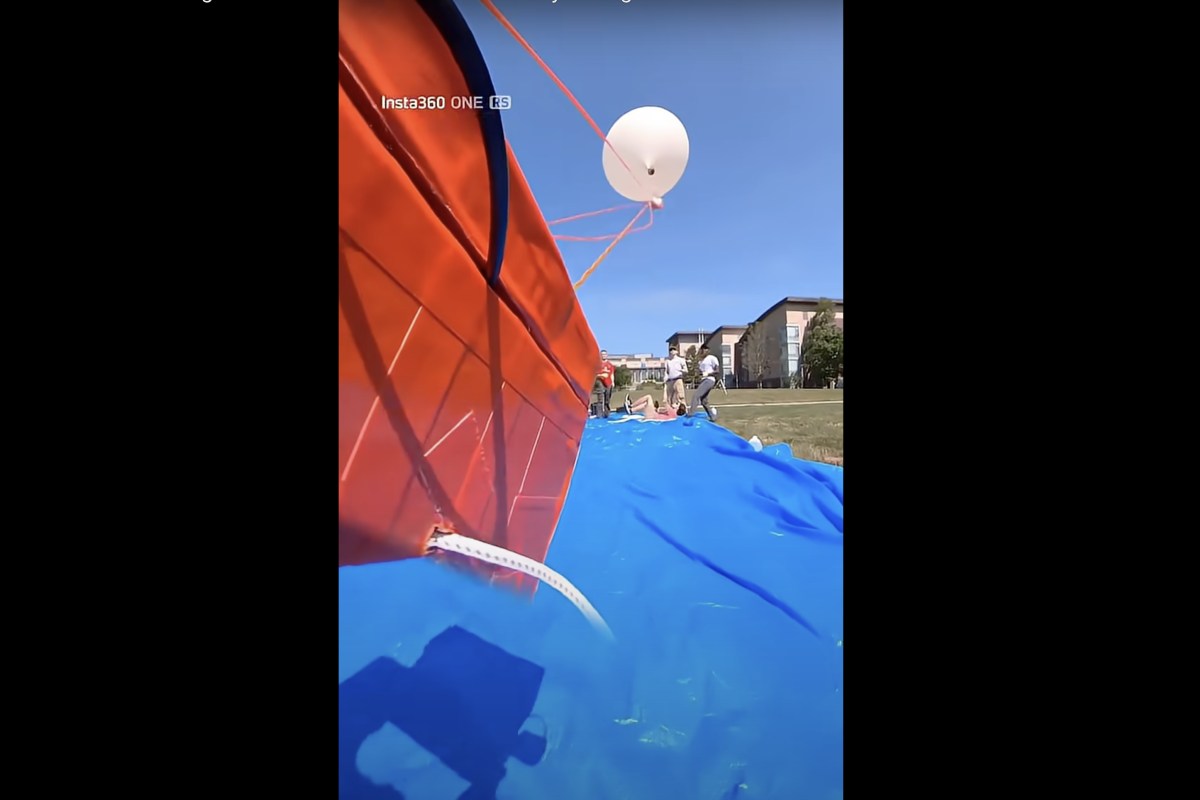STORY: Measuring Cosmic Rays with High-Altitude Balloons
High-altitude weather balloons are taking Olin students to the edge of space—scientifically, at least. This summer, four students, one alum, and faculty member Christopher Lee are measuring cosmic rays thousands of feet above Earth as part of a NASA Science Activation program (SciAct) project.
The research is part of the Nationwide Eclipse Ballooning Project (NEBP) engineering extension (SolarMax), with the team of Oliners designing, building, and launching everything themselves.
It’s real research in real time, thousands of feet above Earth.
"We're learning how to design and operate high altitude balloon systems for upper atmospheric research. This includes integrating commercial and custom data logging systems, adapting hardware to survive the extreme conditions of the upper atmosphere (as high as 100,000 feet), and predicting balloon performance," says William Skelly, a class of 2025 graduate and member of the research team.

Members of the NASA Science Activation (SciAct) Summer Research team steady a high-altitude weather balloon as another researcher lays flat to inflate it. Project supervisor is Christopher Lee, co-chair of faculty affairs, and professor of mechanical engineering. Photo by Liz Dempsey Lee.
Summer 2025: A Peak Period of Solar Activity
The team is conducting their research during an optimal time as the Summer of 2025 has been designated a solar maximum - in other words, the peak period of greatest solar activity in the 11-year cycle of the Sun’s magnetic field.
With a solar maximum comes solar storms: solar flares, coronal mass ejections (CMEs), geomagnetic storms, and solar particle events (SPEs). These phenomena increase in occurrence and intensity during a solar maximum, and most important to the team's project goal, CME events have the potential to cause a Forbush decrease - a temporary drop in cosmic rays’ intensity due to the magnetic field of the CME deflecting the cosmic rays from the Earth.
The team's objective is to observe the Forbush decrease up to an altitude of 100,000 ft using inexpensive radiation detectors in a high-altitude weather balloon.
Besides the radiation detectors, payload for the launches (they've successfully conducted four so far this summer) included two hardware systems supplied by the NEBP: the PTERODACTYL data acquisition system (including temperature, pressure, GPS, 9-dof IMU sensors), and the Iridium satellite tracking and control system.
To measure the Cosmic rays, the team included a custom-designed, modified version of an open-source Geiger counter consisting of a Geiger-Muller tube mounted on a PCB with surface-mount components.
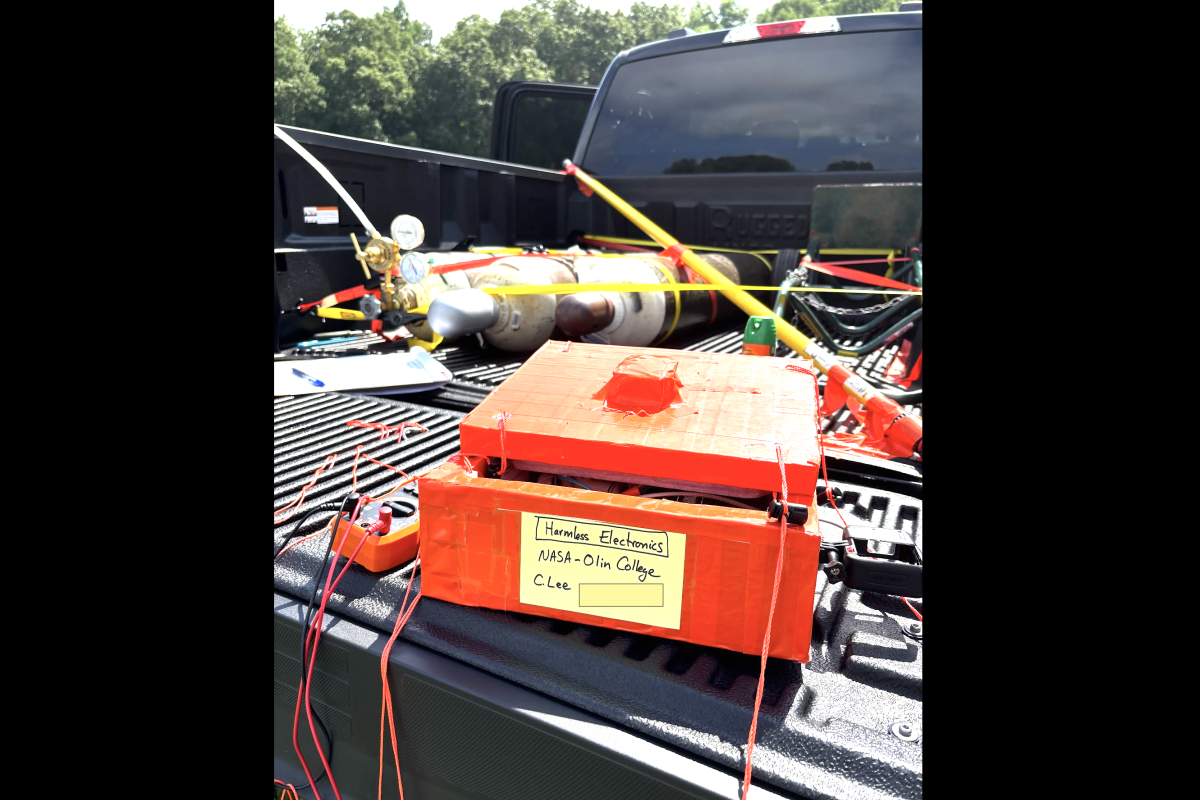
"Harmless electronics" - an image of payload for the balloon is pictured. Photo by Liz Dempsey Lee.
The team worked together on the different parts of the project, an aspect of the Olin summer research program the students say they appreciate and recognize as rewarding.
“Collaborating hands-on with Olin faculty is one of the most valuable parts of the summer research experience," says JoJo Liu '27.
"Working closely with a professor on a project helps us to build meaningful relationships, which is invaluable during our time at Olin and even after we graduate."
From Launch to Landing
The payload sent up into the atmosphere weighed approximately 8 lbs. and was carried by a 1600g helium-filled, natural latex balloon, which returned to the ground using a 7 ft diameter parachute. During the four launches, video from launch to landing was recorded with two (one a 360-degree) cameras.
“Collaborating hands-on with Olin faculty is one of the most valuable parts of the summer research experience," says JoJo Liu '27. "Working closely with a professor on a project helps us to build meaningful relationships, which is invaluable during our time at Olin and even after we graduate."
The flights were all carried out in June and July from three Massachusetts towns, launching twice from Wilbraham, once from Hardwick, and once from Needham. The balloon landed in spots as varied as South Lancaster, Bridgewater, and Concord, MA, with the flight from Hardwick traveling the highest, reaching an altitude of 94,600 ft!
The researchers reported the Cosmic ray measurements captured with their equipment clearly showed the Regener-Pfotzer Maximum or peak radiation measurement at around 70,000 ft.
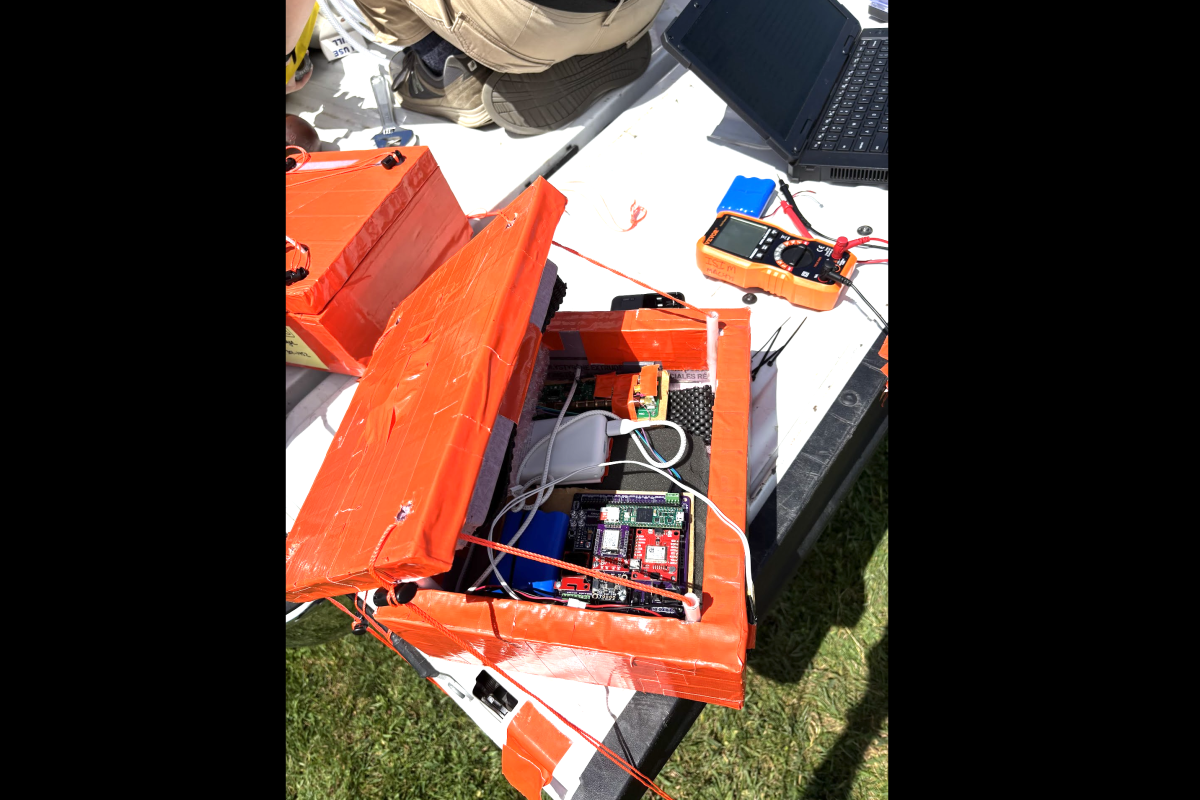
Part of the team's payload is pictured.
The team also shared the success of these flights demonstrates the effectiveness of their data acquisition systems to measure cosmic ray intensity. Additionally, the project has provided each of the Oliners a chance to put their classroom learning into practice.
"Participating in Olin's summer research has given me the unique opportunity to apply the skills I've developed at Olin for a practical purpose. The combination of mechanical design work on the balloon and the field work during our launches is a very rewarding experience," says Alex Qazilbash '27.
Working to build up their experience outside the traditional academic year, conducting research with faculty during the hot, hazy months of summer, only amplifies the value of an Olin education.
“Participating in Olin's summer research has given me the unique opportunity to apply the skills I've developed at Olin for a practical purpose. The combination of mechanical design work on the balloon and the field work during our launches is a very rewarding experience," says Alex Qazilbash '27.
“Overall, this summer research has been a great opportunity to gain experience in engineering research and to develop relationships with our professor and fellow students. This reinforces the value of an Olin education defined by hands-on experience and a close-knit community of driven students and faculty," says Minu Rajasinghe '27.
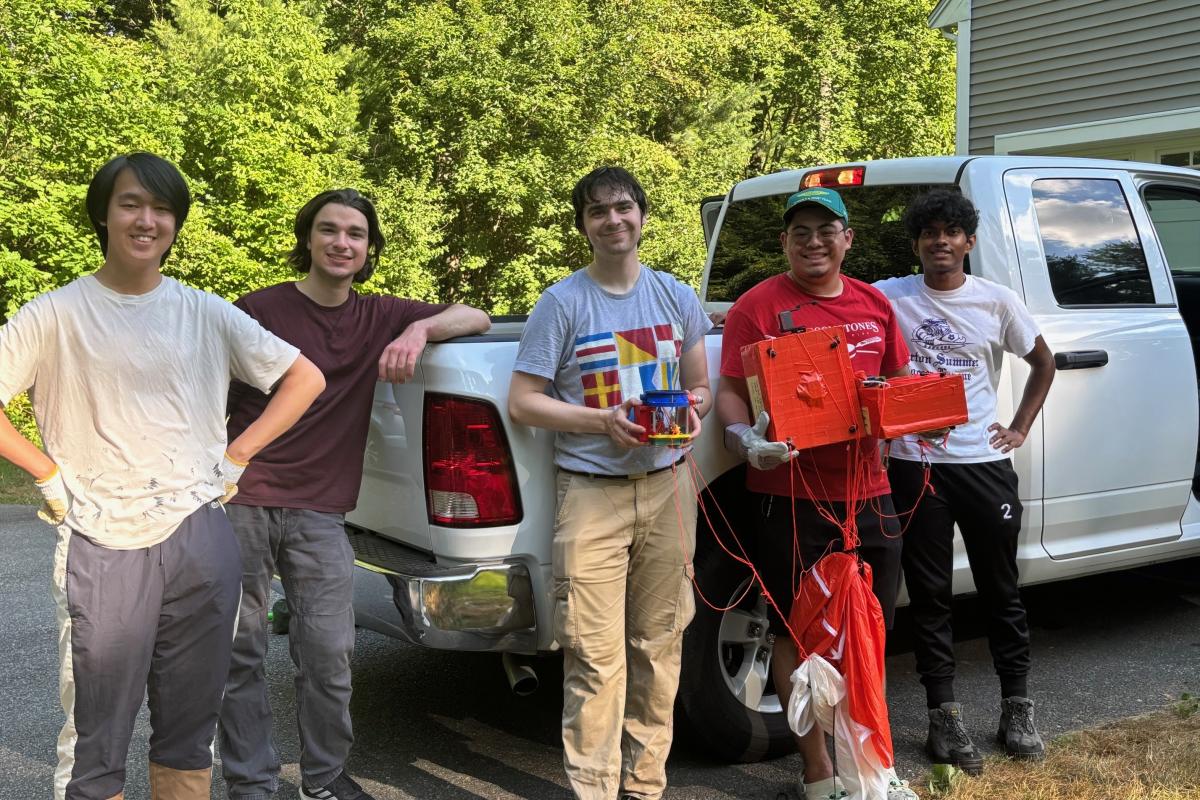
Members of the NASA Science Activation (SciAct) Summer Research Team happily pose with the tracked-down payload, recovered from their high-altitude weather balloon. Photo by Christopher Lee.
With full ownership over both the hardware and software components, the team was able to generate and interpret data through hands-on experimentation.
"Through the developing of hardware, software, and performing our own experiments during the scope of this project, we were able to collect real data and analyze it ourselves, validating it through background research," says Liu.
"It was really cool to be able to see the radiation trends ourselves, for example, rather than discovering it solely through traditional learning sources."
In combining design, experimentation, and analysis, the team’s work exemplifies how research at Olin turns curiosity into discovery!
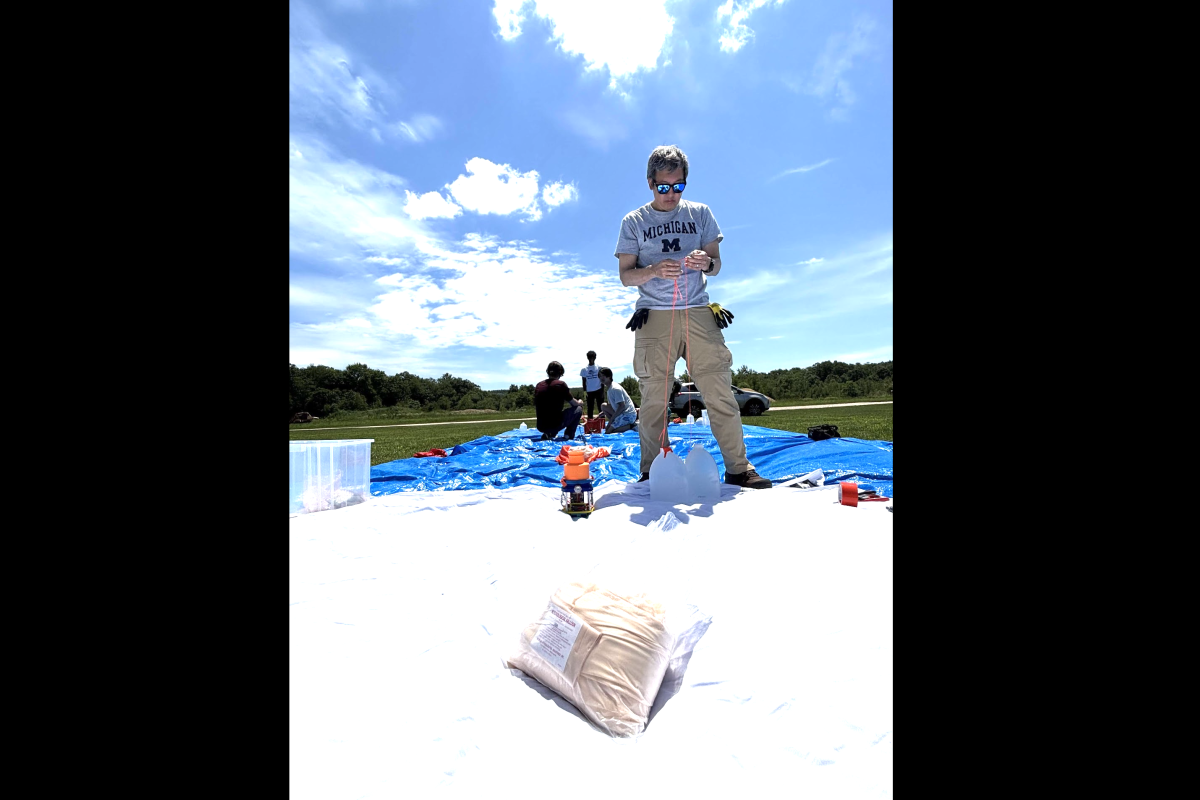
Christopher Lee, project supervisor, co-chair of faculty affairs, and professor of mechanical engineering, works on payload that'll attach to the high-altitude balloon. Photo by Liz Dempsey Lee.
The NASA Science Activation (SciAct) program team is: Jojo Liu '27, Alexander Qazilbash '27, Minuja Rajasinghe '27, William Skelly '25, Christopher Vidaurrazaga '27, Amelia Lee, and Christopher Lee, project supervisor, co-chair of faculty affairs, and professor of mechanical engineering.
